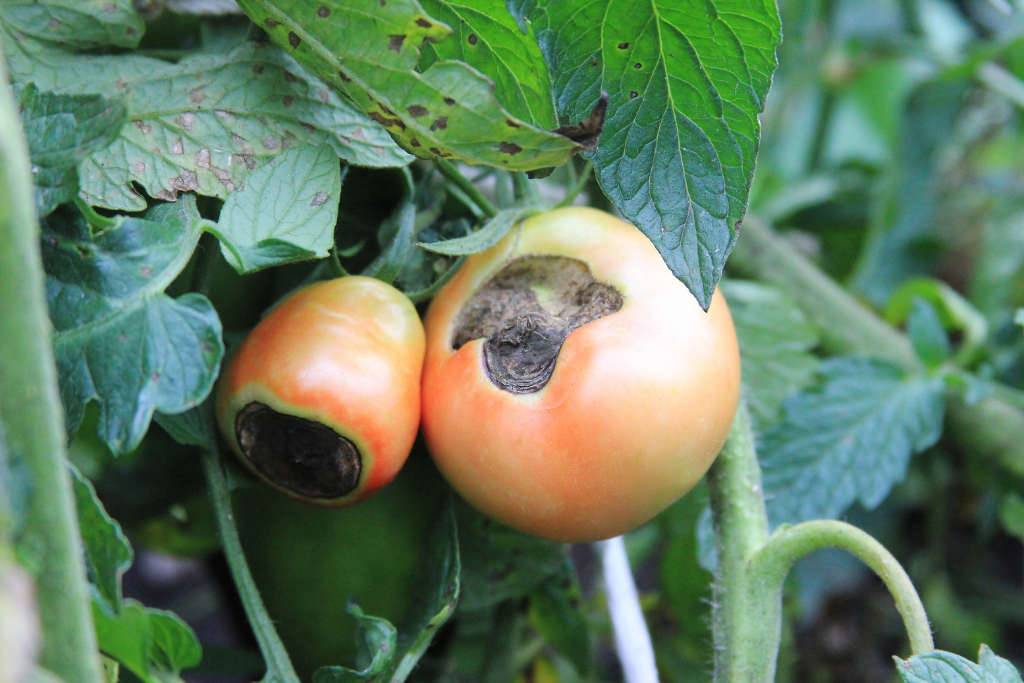
Discovering blossom end rot on your tomatoes is a real downer, but if you know how to fix it, you can save your plants from an untimely end! While blossom end rot is one of the most dreaded threats to your tomatoes, there are several other issues that may spring up suddenly. Thankfully, if you catch them early and treat them with the right insecticides and fungicides, you can stop them before they take over!
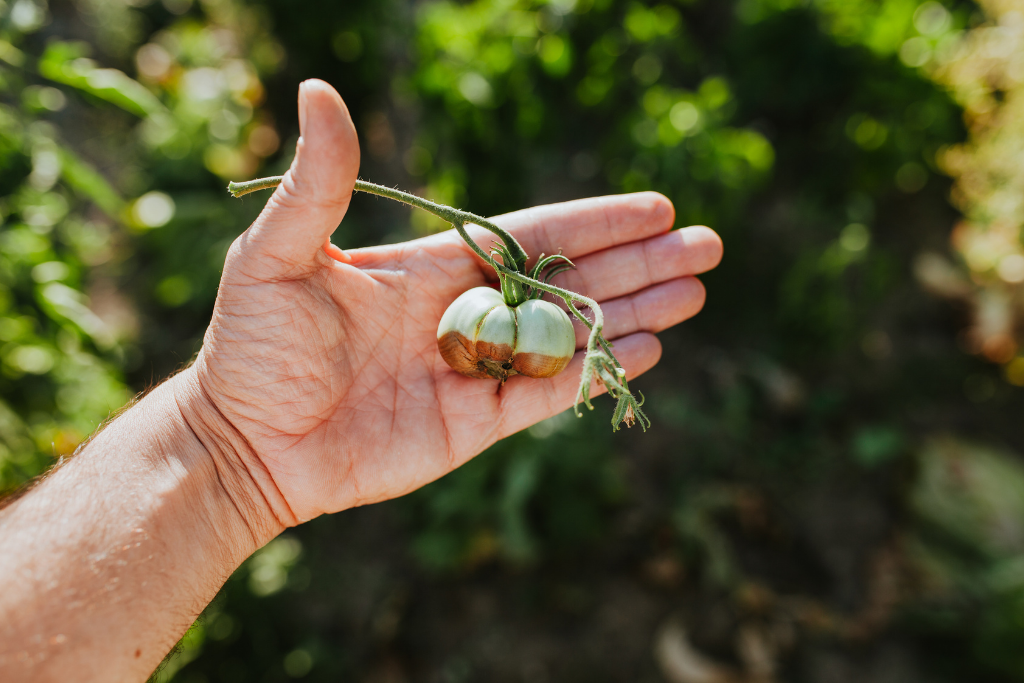
Blossom End Rot
What It Looks Like: Blossom end rot appears as a dark, squishy spot at the bottom of your tomatoes where the blossom once was.
How To Fix It: Luckily, this isn’t a fungus or the work of pesky insects. Blossom end rot is a sign of calcium deficiency, and you can treat it by providing your tomato plants with the nutrients they need. We recommend Roots Organic CalMag to prevent blossom end rot because it’s fortified with plenty of calcium and all the other nutrients your fast-growing summer veggie plants will need. To treat blossom end rot, apply Bonide Rot-Stop Tomato Blossom Set Spray.
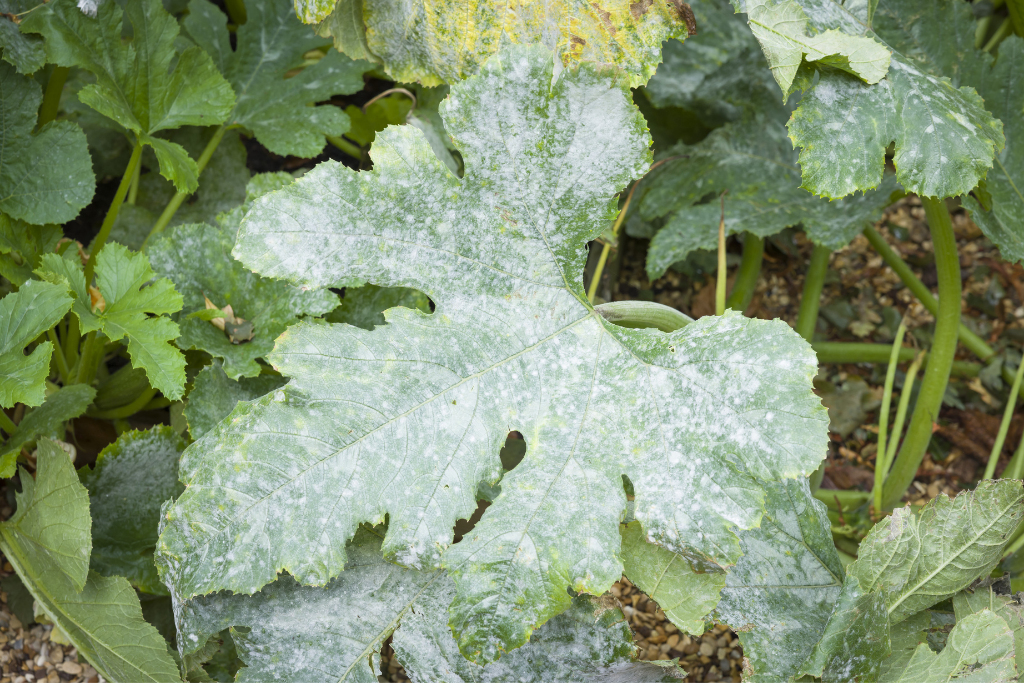
Powdery Mildew
What It Looks Like: A white, dusty powder coating the leaves of your plants.
How To Fix It: Powdery mildew occurs from damp conditions and poor air circulation. Remove the heavily affected parts of your plant with sanitized shears, and then apply Bonide Copper Fungicide according to the instructions on the package. Use it on a day with no rain or heavy wind. To prevent powdery mildew, water the soil directly instead of watering your plants overhead.
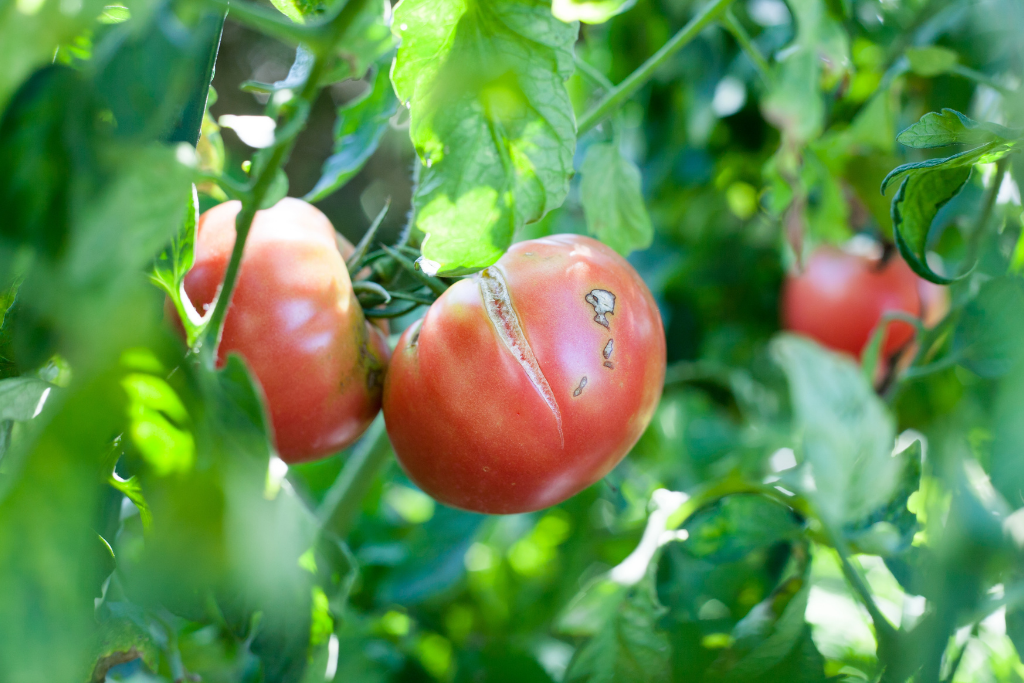
Fruit Cracks
What It Looks Like: Splits across the skin of your tomatoes.
How To Fix It: Skin splitting occurs from inconsistent watering, so try your best to water your plants with the same amount of water at the same time of day. The longer your fruits stay on the plant, the higher the risk of splitting, so as soon as they’re ripe, harvest them. Splits in your tomatoes won’t damage the fruit or render them inedible—it just doesn’t look very nice.
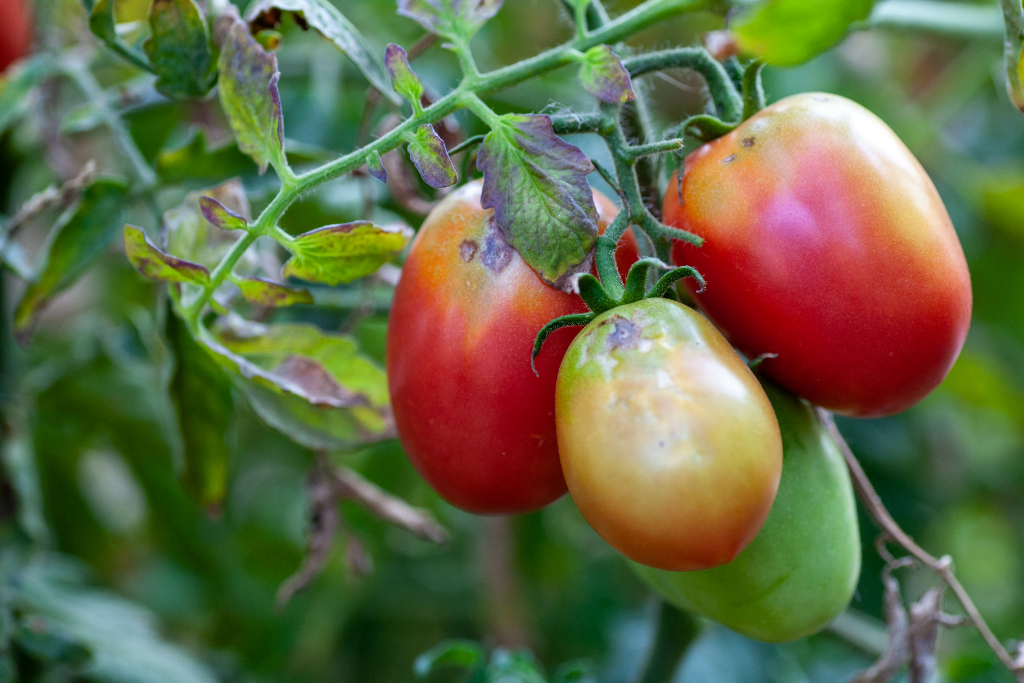
Sun Scald
What It Looks Like: Pale yellow or white blotches on the skin of your tomatoes, which may worsen, turn grey, and develop black mold.
How To Fix It: Often, removing diseased foliage will suddenly expose shaded tomato fruits to direct sun rays, which causes sun scald. Try your best to maintain consistent shading for your tomatoes, and remove damaged fruit from the plant. If it remains on the plant, your plant will be more vulnerable to diseases.
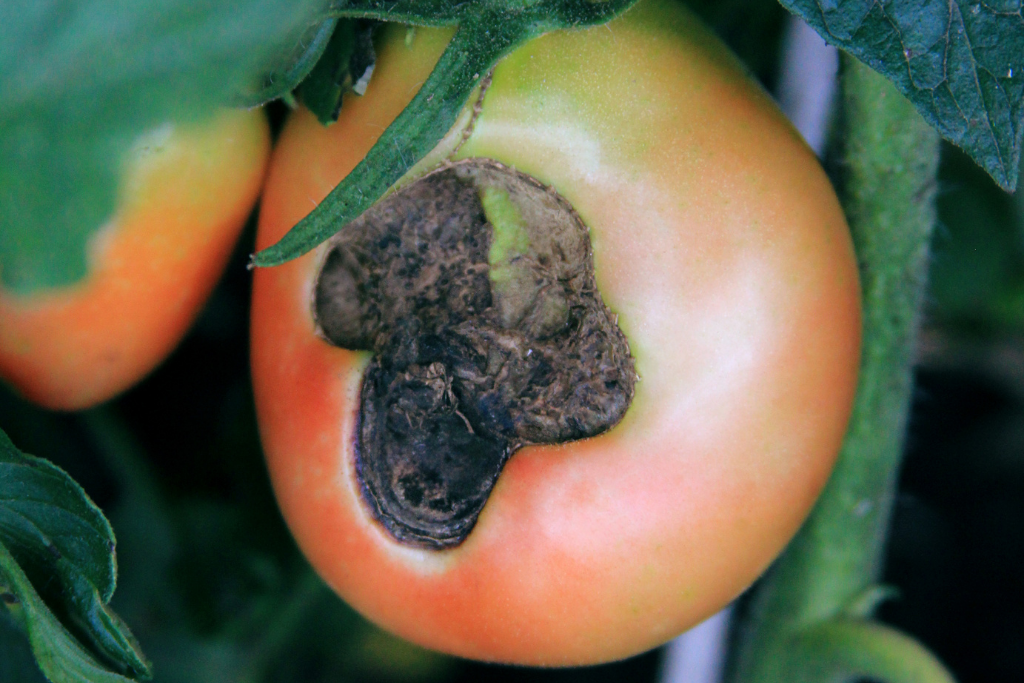
Catfacing
What It Looks Like: Strange dimpling and craters on the side of your tomato fruits, resembling a little cat face.
How To Fix It: Catfacing is caused by exposure to cold temperatures in early development, resulting in malformed flowers and fruit. Herbicides containing phenoxy, or excess nitrogen in the soil can also increase the risk of catfacing. Prevention is critical, and you should remove any affected fruits to prevent diseases from infecting your vulnerable plant.
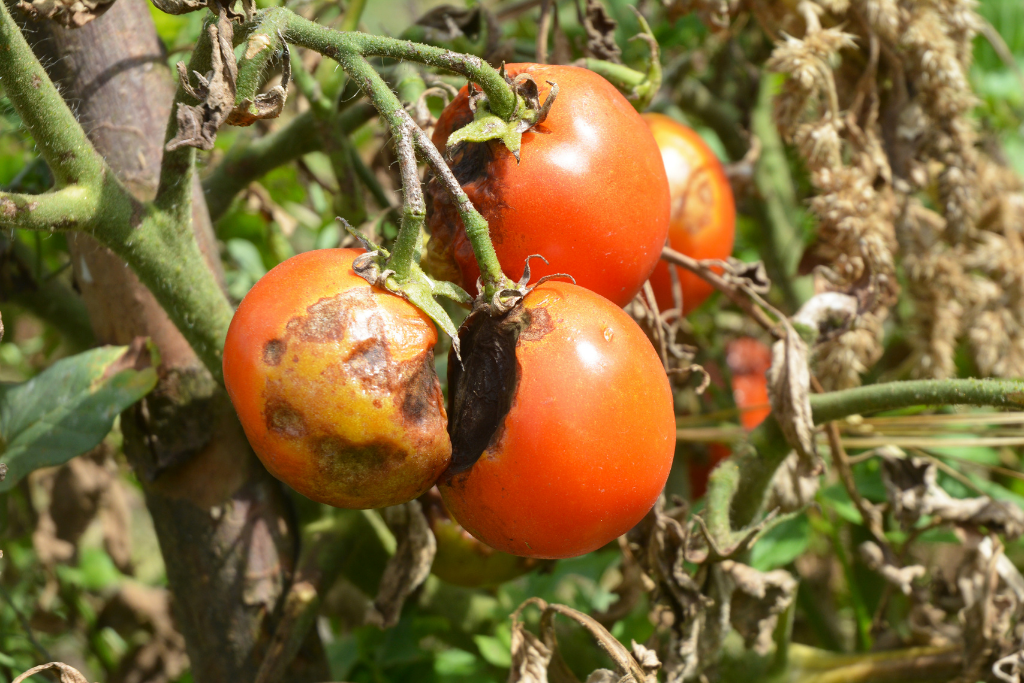
Blight
What It Looks Like: Early blight appears as target rings on leaves, cankers on stems, and black spots on fruit. Late blight appears as light green, mushy spots on fruit, which turn a purplish-black. Stems turn black, and the plant will begin to rot.
How To Fix It: Blight thrives in moisture, so prevent it by watering the soil directly. Remove all affected pieces and apply Bonide Copper Fungicide. Practice crop rotation to reduce the risk of it reappearing the following year.
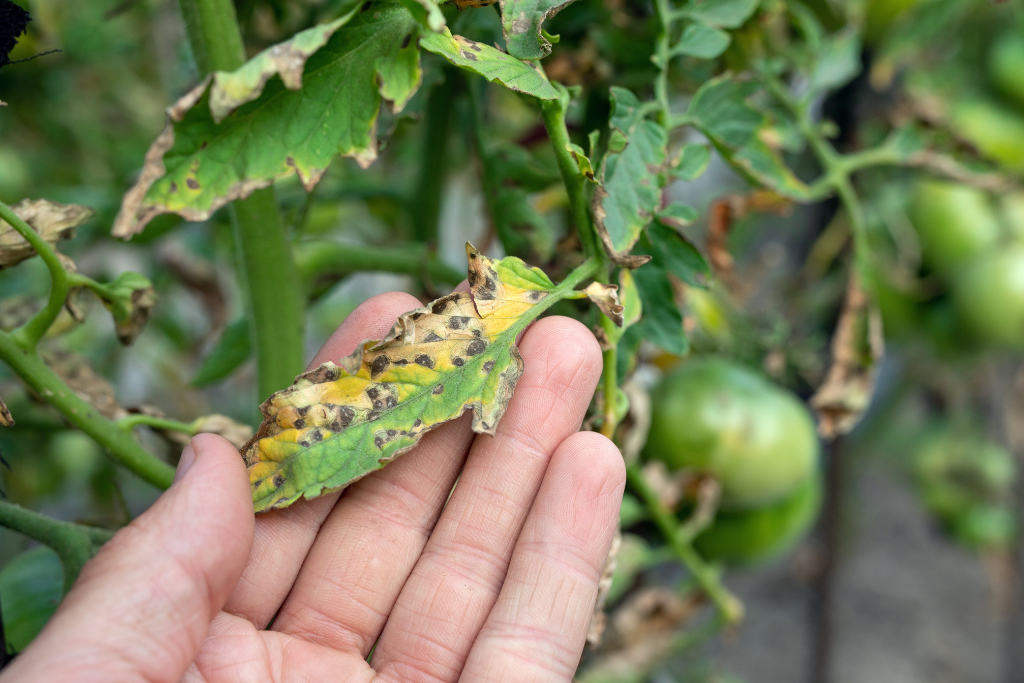
Septoria Leaf Spot
What It Looks Like: Dark spots on tomato leaves.
How To Fix It: Remove all affected pieces and apply Bonide Copper Fungicide.
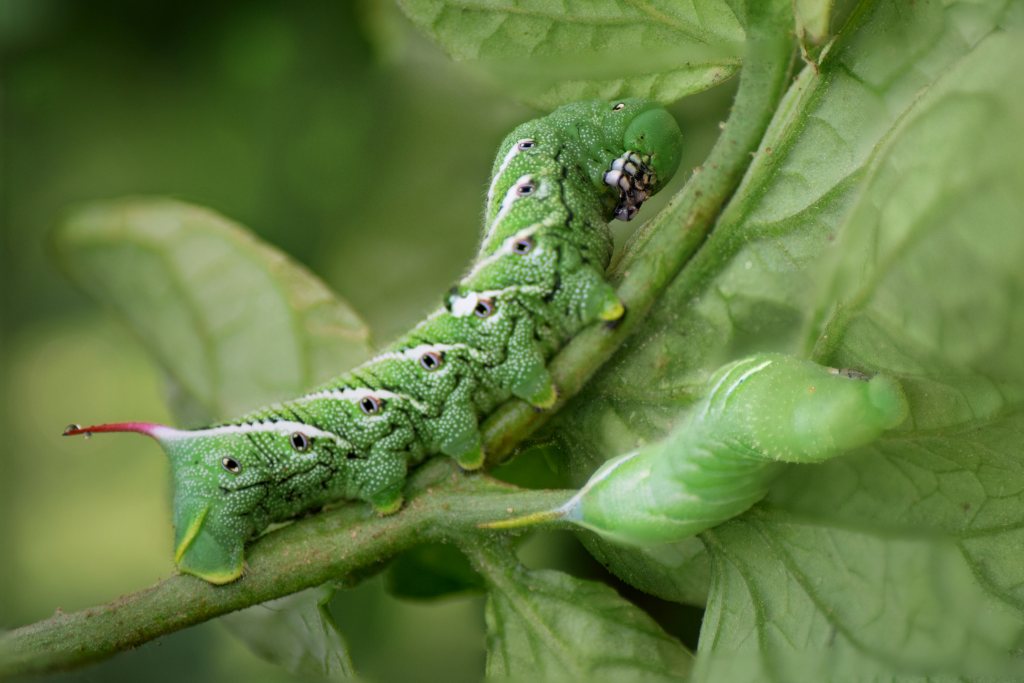
Hornworms
What It Looks Like: Large green caterpillars that eat leaves and flowers.
How To Fix It: Pick them off by hand or shake them off and throw them out. Sprinkle diatomaceous earth around the soil to prevent them from coming back. Use Bonide Captain Jack’s Deadbug Brew if you have a severe infestation.
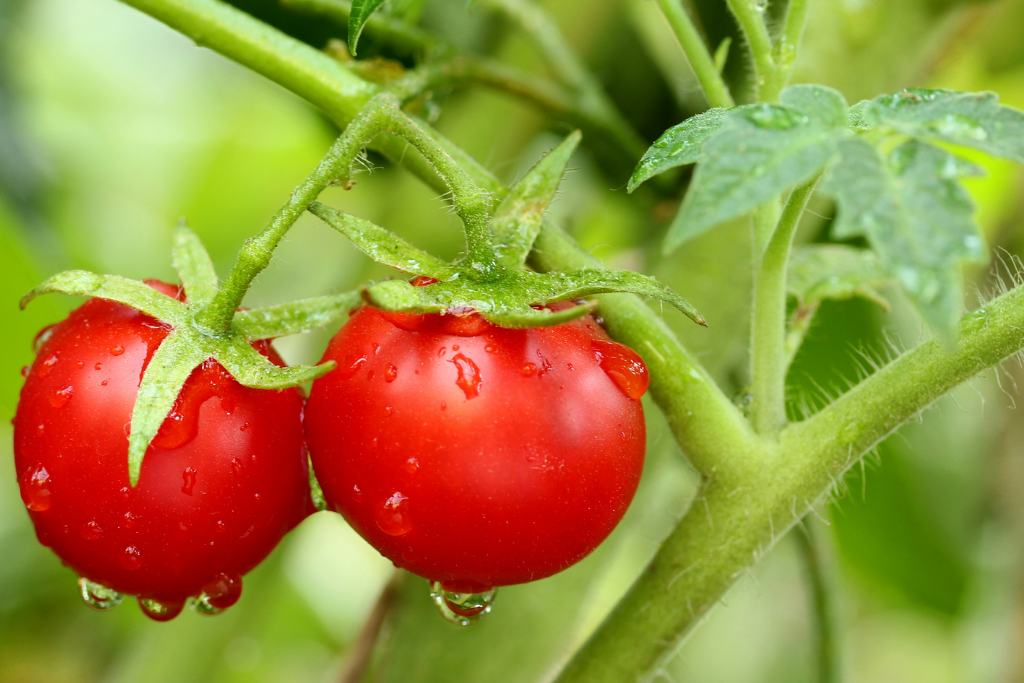
Vine Borers
What It Looks Like: Squiggles across your plant leaves, caused by insects tunneling.
How To Fix It: Remove affected leaves and apply Natria Insect Disease and Mite Control.
Any other issues popping up in your vegetable garden? Visit one of our Alsip locations and our experts will be happy to help you troubleshoot!

